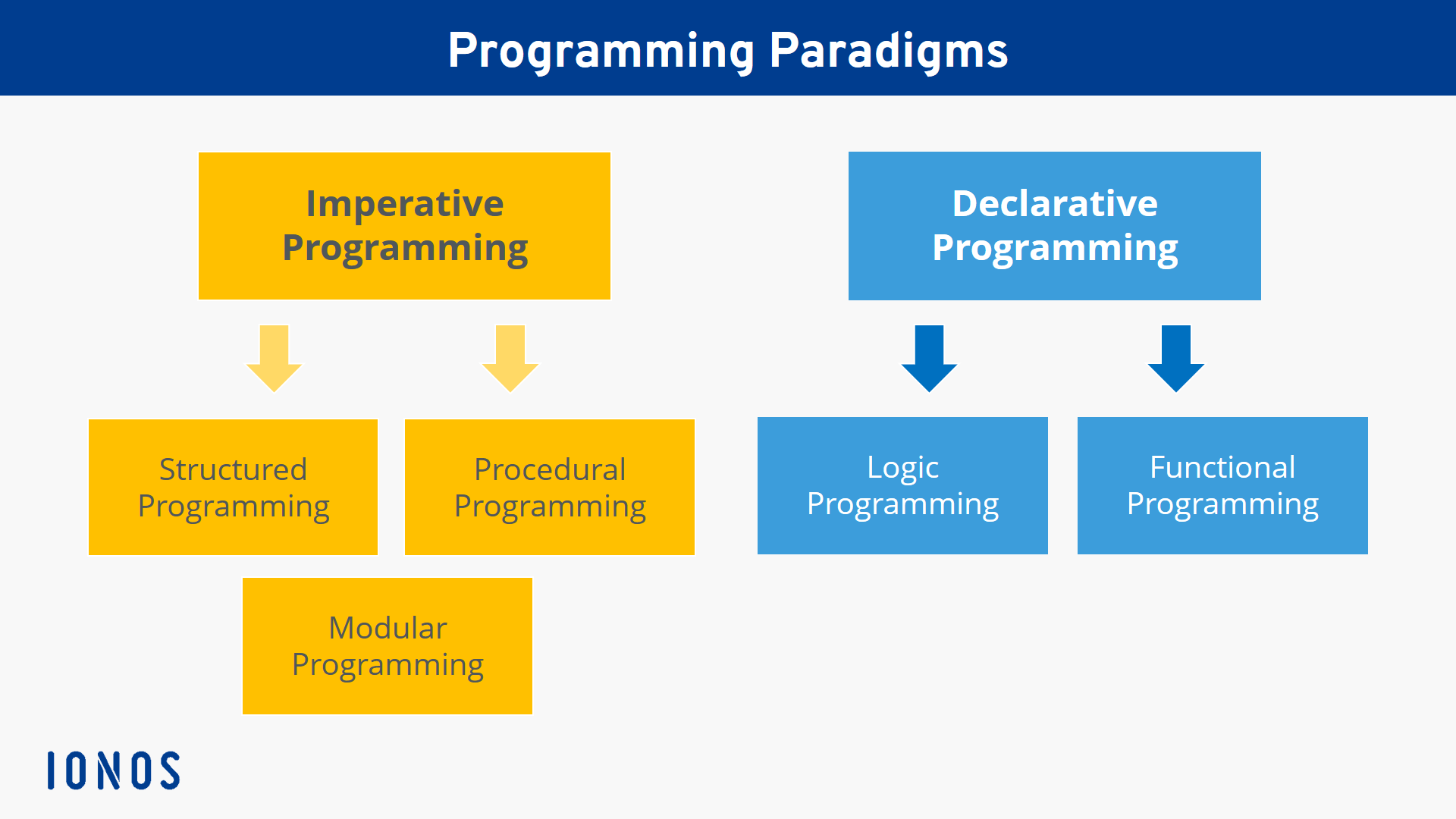In the realm of software development, declarative language stands as a transformative force, offering a unique approach that prioritizes expression over intricate instructions. By embracing a concise and intuitive syntax, declarative languages empower developers to focus on problem-solving rather than the underlying mechanics of code execution.
This comprehensive guide delves into the fascinating world of declarative language, exploring its defining characteristics, advantages, and applications.
Declarative languages distinguish themselves from imperative languages by emphasizing the “what” rather than the “how.” They allow developers to specify the desired outcome without explicitly defining the step-by-step process to achieve it. This paradigm shift leads to code that is not only more concise but also easier to understand, maintain, and debug.
Definition of Declarative Language

Declarative languages are a type of programming language that expresses the logic of a computation without specifying its control flow. In other words, declarative languages tell the computer what to do, but not how to do it. This is in contrast to imperative languages, which specify both the logic of a computation and its control flow.Some
popular declarative languages include SQL, Prolog, and XSLT. SQL is used to query and manipulate data in databases. Prolog is used to develop logic-based programs. XSLT is used to transform XML documents.Declarative languages have a number of advantages over imperative languages.
First, they are often more concise and easier to read than imperative languages. Second, they are often more declarative, which makes them easier to understand and reason about. Third, they are often more efficient than imperative languages, as the compiler can optimize the code more effectively.However,
declarative languages also have some disadvantages. First, they can be less expressive than imperative languages. Second, they can be more difficult to debug than imperative languages. Third, they can be less efficient than imperative languages in some cases.
Syntax and Structure of Declarative Languages
Declarative languages possess a distinctive syntax and structure that differentiate them from imperative languages. In imperative languages, programmers specify the precise sequence of steps that the computer should execute to achieve the desired outcome. In contrast, declarative languages adopt a more abstract approach, focusing on describing the desired result without explicitly specifying the procedural steps.
Comparison with Imperative Languages
The syntax of declarative languages often relies on logical expressions and mathematical notation. For example, SQL, a declarative language used for database management, employs a declarative syntax to define queries. The following SQL query retrieves all rows from the “customers” table where the “age” column is greater than 30:“`SELECT
FROM customers WHERE age > 30;
“`In contrast, imperative languages typically use a more explicit and procedural syntax. For example, in Python, an imperative language, the following code snippet performs the same task as the SQL query above:“`pythoncustomers = []for customer in all_customers: if customer.age
> 30: customers.append(customer)“`The declarative approach of SQL allows the programmer to focus on the desired result without worrying about the underlying implementation details. The imperative approach, on the other hand, requires the programmer to specify the exact steps that the computer should follow, which can be more verbose and error-prone.
Declarative Programming Style, Declarative language
Declarative programming style emphasizes the use of declarative constructs such as logical expressions, pattern matching, and constraints. These constructs enable programmers to express their intent in a more concise and readable manner. For example, in Prolog, a declarative logic programming language, the following code snippet checks if the given list contains the element “apple”:“`prologmember(apple, [apple, banana, cherry]).“`The
declarative style of Prolog allows the programmer to express the desired result without specifying the procedural steps for checking each element in the list.
Advantages of Declarative Languages
.png)
Declarative languages offer a range of advantages that make them valuable for software development. These advantages include:
- Simplicity:Declarative languages are often easier to read and write than imperative languages. This is because they focus on expressing the desired result rather than the specific steps required to achieve it.
- Maintainability:Declarative languages can be easier to maintain than imperative languages. This is because they are less likely to contain errors and are easier to modify.
- Expressiveness:Declarative languages can be used to express a wide range of problems in a concise and elegant way. This makes them well-suited for solving complex problems.
Real-World Examples
Declarative languages have been used to solve a wide range of complex problems in the real world. Some examples include:
- Database queries:Declarative languages are used to query databases. This allows users to retrieve data from a database without having to specify the specific steps required to do so.
- Rule-based systems:Declarative languages are used to create rule-based systems. These systems allow users to define a set of rules that can be used to make decisions.
- Configuration management:Declarative languages are used to manage configuration files. This allows users to specify the desired configuration of a system without having to specify the specific steps required to achieve it.
Limitations of Declarative Languages
While declarative languages offer numerous advantages, they also have certain limitations and drawbacks. These limitations may arise in specific situations or when the characteristics of declarative languages are not well-suited to the problem at hand.
Performance Considerations
One potential limitation of declarative languages is their performance compared to imperative languages. Imperative languages provide explicit control over the execution flow, allowing for optimizations and fine-tuning of performance. In contrast, declarative languages often rely on the underlying system to perform optimizations, which may not always be as efficient as manually crafted code in imperative languages.
Lack of Control over Execution Order
Declarative languages prioritize expressing what needs to be done rather than how it should be done. This can be advantageous in many cases, but it also means that programmers have less control over the order in which operations are executed.
In situations where the execution order is critical, declarative languages may not be the optimal choice.
Limited Expressiveness
Declarative languages may have limitations in expressing certain types of algorithms or computations. For example, some declarative languages may not be well-suited for handling complex control flow or iterative processes. In such cases, imperative languages may provide more flexibility and expressiveness.
Mitigating Limitations
The limitations of declarative languages can be mitigated through various techniques and approaches. These include:
- Using hybrid languages:Combining declarative and imperative programming paradigms can leverage the advantages of both approaches. Hybrid languages allow programmers to express declarative constraints while also having control over specific execution details.
- Optimizing declarative code:Understanding the underlying implementation of declarative languages can help programmers write more efficient code. Techniques such as query optimization and indexing can improve the performance of declarative queries.
- Choosing the right tool for the job:Recognizing the strengths and limitations of declarative languages is crucial. When the characteristics of declarative languages align well with the problem at hand, they can be highly effective. However, in situations where performance, control, or expressiveness are critical, imperative languages may be a better choice.
Applications of Declarative Languages

Declarative languages have gained widespread adoption in various domains due to their expressiveness, ease of use, and suitability for solving specific types of problems. They are particularly well-suited for applications that require complex data manipulation, rule-based reasoning, and knowledge representation.
One of the most prominent applications of declarative languages is in the field of database management systems (DBMSs). Declarative languages like SQL (Structured Query Language) allow database administrators and users to retrieve, update, and manage data stored in relational databases using declarative statements.
SQL’s declarative nature simplifies data manipulation tasks, enabling users to specify what data they want without having to specify how to retrieve it.
Declarative languages also play a significant role in artificial intelligence (AI) and expert systems. They are used to represent knowledge and rules, enabling AI systems to reason and make decisions. For example, Prolog (Programming in Logic) is a declarative language commonly used in AI applications for logical reasoning, natural language processing, and expert systems.
In the domain of web development, declarative languages such as HTML (Hypertext Markup Language) and CSS (Cascading Style Sheets) are used to create and style web pages. HTML provides a declarative way to structure the content of a web page, while CSS allows developers to specify the visual appearance and layout of the page using declarative rules.
Additionally, declarative languages have found applications in other domains such as configuration management, network management, and business rules management. They offer a concise and expressive way to define complex configurations, network policies, and business rules, making it easier to manage and maintain these systems.
Future Trends in Declarative Languages
Declarative languages are continuously evolving, with new advancements and trends shaping their future. These advancements are driven by the increasing demand for efficient and expressive programming paradigms, particularly in domains involving complex data processing and knowledge representation.
One notable trend is the integration of declarative languages with other programming paradigms, such as imperative and functional programming. This hybrid approach allows developers to leverage the strengths of different paradigms, combining the expressiveness of declarative languages with the control and flexibility of imperative languages.
New Features and Tools
Emerging declarative languages incorporate innovative features to enhance their capabilities. These features include:
- Advanced Pattern Matching:Enhanced pattern matching capabilities enable more precise and concise expression of data relationships and transformations.
- Constraint Solving:Declarative languages are increasingly equipped with constraint solving engines, allowing developers to define and enforce complex constraints on data.
- Query Optimization:Advanced query optimization techniques improve the efficiency of declarative queries, reducing execution time and resource consumption.
Impact on Software Development
The adoption of declarative languages has the potential to transform software development practices. Their declarative nature promotes:
- Improved Productivity:Declarative languages allow developers to express complex logic in a concise and readable manner, reducing development time and effort.
- Increased Maintainability:The declarative nature of the code makes it easier to understand and maintain, reducing the risk of errors and improving code quality.
- Enhanced Testability:Declarative languages facilitate automated testing, as the logic is explicitly defined and can be easily verified.
Last Word
As the future of software development unfolds, declarative languages continue to gain prominence. With their inherent strengths in code simplification, problem-solving efficiency, and adaptability to diverse domains, declarative languages are poised to revolutionize the way we approach software engineering. Embracing this paradigm opens up new possibilities for innovation and efficiency, empowering developers to create software solutions that are both powerful and elegant.
Questions and Answers
What is the fundamental principle behind declarative languages?
Declarative languages focus on expressing the desired outcome rather than the explicit steps to achieve it, prioritizing problem-solving over code execution mechanics.
How do declarative languages differ from imperative languages?
Declarative languages emphasize the “what” (desired outcome) while imperative languages focus on the “how” (step-by-step instructions).
What are some common applications of declarative languages?
Declarative languages find applications in various domains, including database querying (SQL), data manipulation (XSLT), rule-based systems (Prolog), and constraint programming.